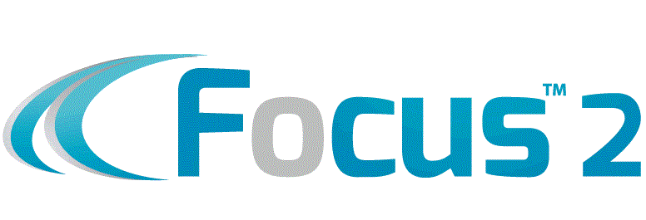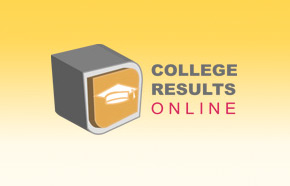Is help on the way?
Financial Aid: Help Is on the Way
Changes to big financial aid programs, including federal student loans and Pell grants, will make more students eligible and terms more attractive
By Alison Damast
Students taking out federal student loans will be confronted with a bevy of changes when they visit their school's financial aid office this fall. This spring, the U.S. Senate passed a student loan bill—the Student Aid & Fiscal Responsibility Act—that led to a major revamping of the federal student loan program, shifting everything from how students obtain their loans to the amount of aid doled out through such programs as the Pell Grant.
"This bill was the largest investment in higher education since the GI bill," says Edie Irons, a spokeswoman for The Project on Student Debt, an initiative of the Institute for College Access & Success, referring to the 1944 legislation that provided educational and other benefits for returning World War II veterans. "It is definitely a historic change."
The new student aid regulations went into effect on July 1, and college financial aid officers will be spending the next few weeks getting students up to speed on the updated guidelines before the start of the school year. In addition to these changes, there are important updates to the Income-Based Repayment loan program, which caps monthly loan payments for borrowers. Some of these changes will be obvious to families, but others will require borrowers to do more research to determine if they qualify for the revamped programs. For most families, the transition should be relatively seamless, says Allesandra Lanza, a spokeswoman for American Student Assistance, a Boston-based nonprofit that helps students and families manage higher education debt.
"People might not be aware that some of these changes have occurred, but I think schools and colleges are by and large ready for this," Lanza says.
For borrowers who want to prepare themselves beforehand, here's a roundup of some of the most important new federal loan reforms for recent graduates and current students, as well as strategies on how to get the maximum benefit out of them:
Federal Student Loans
Previously, the majority of families and students who obtained federal loans did so through the Family Education Loan Program (FELP), rather than directly through the government's Direct Loan Program. Under the FELP program, the government paid commercial banks such as Sallie Mae and Nelnet fees to act as intermediaries between the government and the student borrower. The banks would originate the federal loans to students, administer them, and collect payments after graduation. As of July 1st, that program is no longer in place; now all federal student loans are available from the U.S. Education Dept. through the Direct Loan program, and students can no longer obtain such loans through commercial banks. This is an important step that will make the student loan process more transparent for students and families, says Irons. "[When] private lenders were making both federal and private loans, it could sometimes be hard for the consumer to know what type of student loan they were getting," she says. "From now on, it should be clearer."
Still, students who used to obtain federal loans through the FELP program may temporarily be confused by the transition to the Direct Loan program, says Kalman Chany, author of Paying for College Without Going Broke. In the last few weeks, he has received several "panicked" phone calls from parents who thought the federal student loan program had ended. "Don't believe those rumors," Chany says. "The only thing that has changed is that the middleman—the banks—are now removed from the federal loan program."
The move to the direct lending program will have immediate benefits for students and families, including lower interest rates and accessibility, says Mark Kantrowitz, a student loan expert who runs the website FinAid. Borrowers who took out federal Parent PLUS Loans, which are repaid by the student's parents, were charged an 8.5 percent interest rate by banks under the old FELP program; under the new Direct Loan program, the interest rate on the loan is just 7.9 percent. Another benefit? More families will be eligible for federal loans under the Direct Loan Program. About 42 percent of parents who tried to take out PLUS loans through the FELP program were denied the loans by banks because of an adverse credit history. The denial rate for those applying for a PLUS loan through the Direct Loan program is half that, says Kantrowitz. "The changes mean that PLUS loans will be cheaper and more available in the Direct Loan program, and it is going to be a smoother process," he says.
Loan Consolidation
Students who hold federal loans typically can't consolidate them until after they've graduated or left school. Now there's an exception to that rule. Students who hold at least two of three different types of federal loans will be able to consolidate them while they are still in college, during the period starting this past July 1 and ending June 30, 2011. The loans that qualify for consolidation: FELP loans issued by a private lender, Direct Loan Program loans, and FELP loans that were sold to the Education Dept. during the financial crisis. Some students hold several of these loans and might want to consolidate to avoid the trouble of making payments to two or three different lenders after college, says Lanza. "This way," he explains, "they'll have only one payment and less confusion."
But Finaid's Kantrowitz says students should think long and hard before they consolidate their loans this year. Consolidation would result in savings, but the amount is minimal, he points out. What's more, he notes, most federal loans come with a six-month grace repayment period, which students would lose if they consolidate their loans while still in college. Students would be wiser to wait to consolidate their loans until after college. "The ability to have that grace period is a really valuable benefit," Kantrowitz says. "Consolidating during this school period may do more harm than good."
Pell Grants
The revamping of the Federal Loan program will yield some immediate returns for students. The government will be saving $60 million in fees previously paid under FELP to the commercial bank lenders, some of which will now be funneled into the Pell Grant program, one of the most popular need-based grant aid programs. As a result, the maximum annual Pell Grant for the 2010-11 academic year will rise to $5,550, up from $5,350 last year, and the average grant is expected to be $3,685, about $220 more than last year.
Even more encouraging, more students than ever will be eligible for the Pell Grant come fall because of a change in the expected family cutoff, or the minimum amount a family is expected to pay toward the cost of college, says Kantrowitz. The cutoff has been raised to $5,273, from $4,617, making the grant available to a much larger group of students. About 8.4 million students—617,000 more than last year—will be eligible for Pell Grant aid, according to the Education Dept. "This is going to be a fairly substantial improvement in financial aid for some of these families," Kantrowitz says.
Income-Based Repayment Program
The popular Income-Based Repayment (IBR) plan launched last July is designed for borrowers with federal student loans who have high debt relative to their income. It caps most borrowers' monthly payments at less than 10 percent of their gross income for 25 years, after which their remaining student loan debt is forgiven. The original structure of the program included some flaws, however, and in some instances borrowers were paying more in monthly payments than they should have, says Irons, of the Project for Student Debt. These flaws have since been corrected by the Education Dept., and the changes went into effect July 1.
The first fix to the program applies to married couples. Previously, a lender for the IBR program would look at a married person's student loan debt and use the couple's joint income to calculate what the monthly payments should be for the program. The program did not take into account that the IBR participant's spouse could have federal student debt as well. The result: married couples were charged up to twice as much as two single borrowers in the same situation, says Irons. That glitch has since been fixed, and now the IBR program will take both spouses' federal loan debt, as well as their total income, into account when calculating their monthly payments, Irons says. For example, if both spouses have federal loans and file a joint federal tax return, the calculated IBR payment amount for each borrower will be adjusted based on each borrower's percentage of the couple's total eligible loan debt. The end result: The couple will pay less. "This is better for married borrowers, because it is not fair to assume that a joint income is totally available for one's debt," Irons says. This change will go into effect automatically for new IBR users who apply for the program this year. It will not happen automatically, however, for couples who already use IBR and file jointly. Borrowers in that situation should contact their lender this summer and make certain that their IBR payment is adjusted to reflect the change, says Irons.
Another update to IBR this July will expand eligibility for the program. Previously, a lender calculated whether borrowers were eligible for the IBR program based on the original, or baseline, amount of debt the borrowers first owed when they entered the repayment period on their loan. Many borrowers' original loan balances increase, however, because of accrued interest during periods of loan deferment or forbearance. For example, a person who owed $40,000 in loans when she first graduated could easily owe $50,000 a few years later if she deferred payment of her loan for a few years, says Irons. Under the new guidelines, eligibility for the IBR program will now be calculated based either on the original balance of the loan when the borrower first entered repayment or on the current loan amount, whichever is larger. For the first time, borrowers will be able to qualify for the program based on what they actually owe, says Irons. "These changes are going to make more people eligible for IBR and make the program more fair and accessible," Irons says.
original article here:





